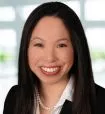A little over one year ago, Ogletree Deakins announced
that shareholder Amanda T. Quan had been selected to serve as the
office managing shareholder of the firm's Cleveland, Ohio,
office. Amanda has been with Ogletree Deakins for more than a
decade, during which time she has represented employers in all
types of employment litigation in both federal and state courts, in
arbitration proceedings, and before various administrative
agencies. She also defends universities and colleges in Title IX
litigation.
In addition to employment and Title IX litigation, Amanda
advises employers on employment-related matters. She conducts
internal investigations, audits of employer policies and practices,
and employee trainings.
Amanda is recognized in the 2024 edition of The Best Lawyers in America® for Employment Law – Management, and Litigation – Labor and Employment, and she was named as one of Crain's Cleveland Business's 2024 Notable Women in Law. Amanda also serves as co-chair of ODA3, Ogletree Deakins' affinity group for Asian American and Native Hawaiian/Pacific Islander attorneys and allies, and on the Board of Directors of the Asian American Bar Association of Ohio.
In honor of Women's History Month, we asked Amanda a few questions about her experiences as a prominent and respected woman in the legal profession. Below are some of her reflections as a practicing attorney, a resource group leader, and an office managing shareholder.
Q: Were there any key events in your life that inspired you to pursue law as a career?
A: I was part of the debate team in middle school. One day in grade 8 after a debate competition, I declared to my mom that I was going to be a lawyer. And I haven't looked back since.
Q: What led you to practice in a labor and employment law firm?
A: Food. In all honesty, the only reason I ended up at a labor and employment law firm is my love of food. Before joining Ogletree Deakins, I was at a regional full-service law firm. I received a call out of the blue asking if I'd be interested in learning more about Ogletree Deakins, and I politely declined. Shortly thereafter, a couple of the associates from Ogletree Deakins reached out to me, inviting me to lunch and offering to tell me about their experiences at the firm. I agreed to lunch and the rest is history.
Q: Can you reflect on the role of women in the legal profession and how it has changed from when you entered the legal profession—in terms of relationships with clients, colleagues, and/or adversaries?
A: Even in the time that I've been practicing as a lawyer, I've witnessed significant and positive changes in the role of women in the law and in the opportunities provided to women. In law school, there were many women and many men. And when I first began as a lawyer, in my starting class at a prior law firm, there were both women and men. But there were noticeably fewer women at the important tables—fewer female partners than male partners, and there were rarely women at the highest levels of firm leadership. (When looking at women from underrepresented groups, the numbers were even more discouraging.) The majority of client contacts were male, and golf outings were a fairly common way to connect with colleagues and clients.
Whether or not the belief was self-imposed, as a young lawyer, I believed that I should not talk about my desire to start a family and that the family or personal side of my life should not be made apparent in my work life. This was somewhat reinforced by external interactions. For example, after practicing for several years, I was provided with an opportunity to work a case from start to finish, and after I successfully obtained a dismissal of the case, the plaintiff appealed the decision. The client had kindly agreed to allow me the opportunity to argue the appeal, which was a significant opportunity early in my career. The court ended up setting oral arguments for three days after I was scheduled to give birth to my first child. I filed a motion requesting a continuance of oral arguments until shortly after giving birth, informing the court of my due date. The request was denied, and another attorney had to step in to argue the appeal. It was a surprising and disappointing experience for me.
Fast-forward to today, however, and the culture has shifted. The majority of my client contacts are now women (many of whom are moms like myself). And I've been blessed to end up at a firm that truly values and promotes women. The classes of attorneys who are promoted to shareholder year after year are balanced between women and men. Women are promoted to important leadership positions at all levels across the firm. Women make up about half of our firm's board of directors. Our firm's current managing shareholder, i.e.,the top leadership position, is a woman. These developments are not specific to the legal profession.
Across all industries, we've seen women rise to the top. This past year, the music and movie industries, for example, have seen very public demonstrations of this. Representation matters. And thanks to the trails that the women before us have blazed, we can now see women in all roles.
Q: What are some of the nuances of your experiences as a woman from a historically marginalized group working in the practice of law?
A: Unconscious biases can be incredibly harmful—especially to individuals from historically marginalized groups. People sometimes put you in a box based on what they perceive you can or should do, whether intentionally or unintentionally. As a Chinese Canadian, I've been told I'm too nice or too quiet. When I first started practicing law, I had a senior partner at a prior firm tell me that I should focus on something other than litigation, as I was not aggressive enough to be successful in court. I did not fit the “old boys' club” image of what he believed a litigator should look like. Throughout the years, I've been blessed with mentors who have shown me that you can be an effective litigator without being a stereotypical bulldog, and they have provided me with opportunities to do so. But interactions such as these can certainly add to feelings of self-doubt and inadequacy and allow for the imposter syndrome to take hold.
Q: What were some key factors in your career trajectory to firm leadership?
A: Two key factors for me were having meaningful mentors and sponsors. Throughout the years, I've been fortunate enough to have had numerous mentors—some formal, some informal—who guided and supported me along the way, including David Hrina, Jerry Chattman, Bruce Hearey, Michelle Arendt, John Gerak, Monique Gougisha Doucette, Ellen Toth, and so many others. They all invested precious time and energy in providing me with guidance and feedback and in sharing useful information and advice.
To take things to the next level, though, you often need a sponsor as well. Sponsorship is sometimes described as phase two of mentorship. After a mentor and a mentee work together for some time, and develop a successful and productive mentoring relationship, sometimes a mentor will observe positive growth in the mentee and become personally invested to the point of becoming an advocate for that mentee. The sponsor may choose to use their influence, credibility, and/or reputation to provide opportunities for the mentee and to advance the mentee's career. For the past decade or so, I've been so very blessed to have John Gerak not only as a mentor, but also as a sponsor, boss, and friend. I would not be where I am today if it were not for his mentorship and sponsorship.
Q: What do you think the biggest challenges are for your clients right now?
A: For employers operating in multiple states, multistate compliance remains one of the biggest challenges. It is increasingly difficult to stay up to date on the complex and rapidly changing patchwork of state laws and to manage policies and practices in compliance with these requirements. Especially for those companies with a large national (or international) footprint, it can be overwhelming to oversee compliance in areas such as leaves, vacation/paid time off, wages, hiring and onboarding, drug and alcohol testing, recordkeeping, and terminations and reductions in force.
In addition to multistate compliance issues, many clients are focused on the evolving landscape of diversity, equity, and inclusion. Since last summer when the Supreme Court of the United States issued its landmark ruling in Students for Fair Admissions, Inc. v. President and Fellows of Harvard College, a decision that addressed two universities' race-conscious college admissions policies, many clients have carefully considered the potential implications beyond college admissions. Increased scrutiny of diversity efforts following the Supreme Court's decision has introduced a nuanced challenge for employers, as companies evaluate strategies for continuing to prioritize maintaining diversity in the workplace and creating cultures of inclusivity.
Q: Is there a development in your practice area that you have your eye on, such as pending legislation, regulations, or litigation?
A: Those of us who practice in the higher education space have been patiently (or perhaps not so patiently) awaiting the final revisions to the regulations implementing Title IX of the Education Amendments of 1972, which are now expected this summer. The current regulations were issued in 2020. In July 2022, the U.S. Department of Education released proposed amendments to those regulations. Due to an unprecedented number of public comments in response to the proposal, the Education Department initially announced an anticipated date of October 2023 for the final Title IX rule. Last month, the Education Department submitted its revisions to the Office of Information and Regulatory Affairs, which has until June 2024 to review the regulations. Depending on when the final revisions are published, colleges and universities may need to act quickly to implement changes for the 2024–2025 academic year.
The content of this article is intended to provide a general guide to the subject matter. Specialist advice should be sought about your specific circumstances.


